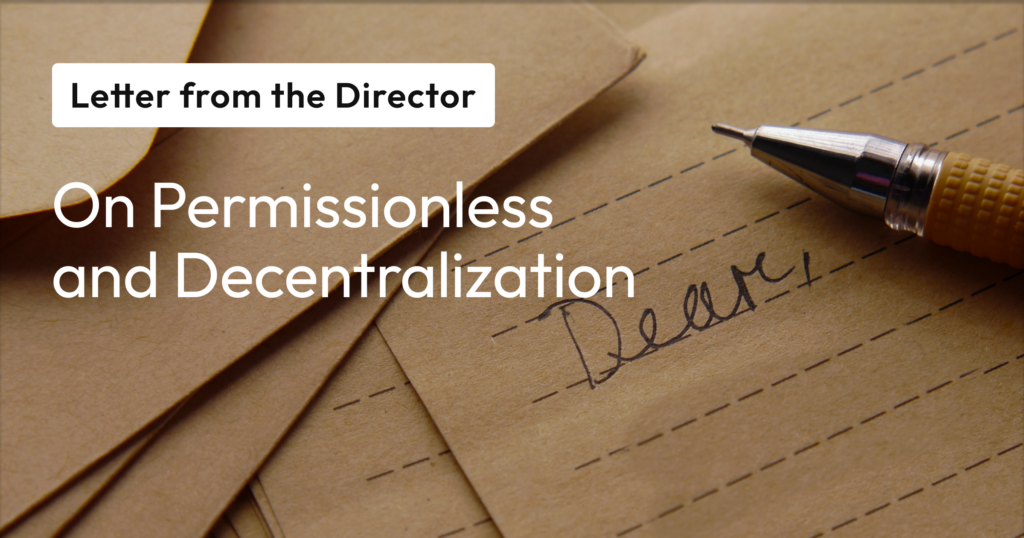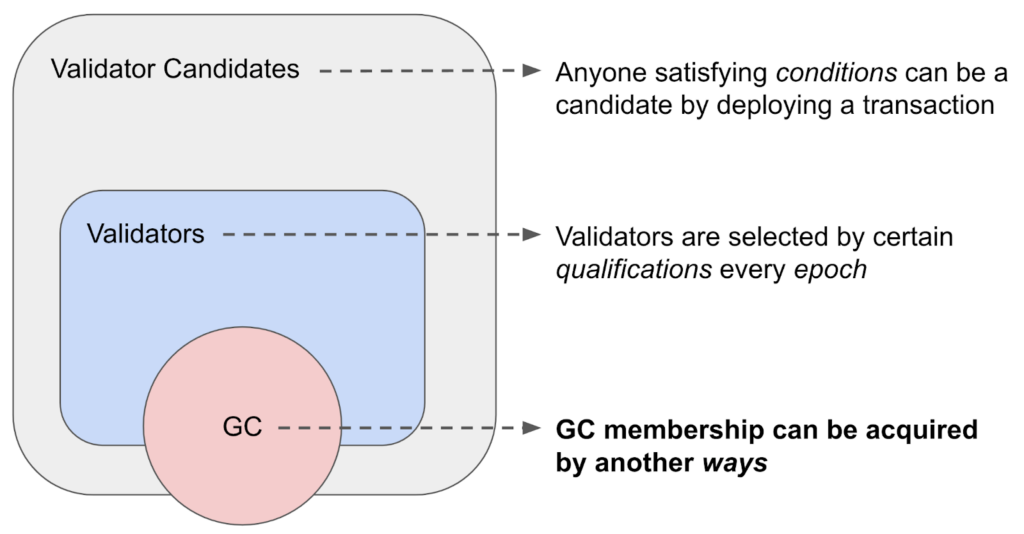On Permissionless and Decentralization

The following is a part of a regular Foundation communique in which Sam shares his thoughts with other Foundation members. The content of the original communique has been repurposed for sharing with the community. We as an organization chose to do this to provide the broader Klaytn community with insights and visibility into how the Klaytn Foundation works as an organization.
What got you into the blockchain and Web3 space? For me, I find it fascinating how blockchain brings together various non-technical fields like politics, behavioral economics, and game theory to solve a problem that technology alone cannot solve—achieving consensus on an open network in a decentralized, autonomous, and trustless manner.
As many may know, Klaytn was launched as a semi-centralized network, with Governance Council (GC) members taking on the role of Core Cell Operators (CCOs) running validators with permission from Klaytn Foundation. This was largely due to the consensus algorithm which we chose for performance, but we had always planned for Klaytn to ultimately shift to a permissionless and decentralized structure through a phased approach.
While there are advantages to a permissioned network structure, I firmly believe that it is essential for public blockchains to embrace the fundamentals of Web3 if they are to succeed in the long term. Since we’ve recently announced plans for Klaytn to become permissionless, I’d like to elaborate on our stance on permissionless structures and decentralization, and the subtle line between them.
Currently, all CCOs are GCs and vice versa. Once the permissionless structure is in place, anyone can automatically become a CCO as long as they satisfy the conditions, such as having a minimum amount of KLAY staked and other criteria that are still under discussion.

This will logically and physically separate CCOs and GCs—CCOs no longer need to be part of the GC to secure the network, and GC members will be able to participate in governance without running consensus nodes, although we expect most GC members will choose to double up as CCOs and there will still be an intersection between them.
This separation is important because while we want as many permissionless validators as possible, if every CCO also has governance power, it will be challenging to achieve a quorum due to low voter turnout from CCOs not interested in governance. This is the line between permissionless structures and decentralization that I mentioned earlier.
While being permissionless is simply about allowing anyone to automatically participate as long as they meet pre-defined conditions, decentralization is a lot more nuanced. In The Meaning of Decentralization, Vitalik identified three aspects of decentralization—architectural, political, and logical decentralization.

For blockchains, architectural and political decentralization are more important, so I’ll focus on these two.
The first is architectural decentralization, which refers to how many nodes are geographically distributed in the network. The more architecturally decentralized a blockchain is, the more data is replicated across more nodes, the more secure the data is, and the more likely it is that the blockchain will continue to function even if some nodes fail. However, the greater the number of nodes and the geographical distance between them, the larger the impact on performance and latency. As Klaytn’s 1-second block time is one of our greatest differentiators and an integral part of delivering a seamless Web3 end-user experience, we will be aiming to maintain this performance while achieving architectural decentralization through improvements in consensus algorithm and implementation.
The second is political decentralization, which is about how many different entities are making governance decisions for the blockchain. Given the decentralized nature of blockchain, a governance structure based on democracy naturally fits best, and is most preferred by network participants. And just like how different countries implement democracy differently, so too will every blockchain. For Klaytn, we have opted for a governance model similar to representative democracy, where governance decisions are made via on-chain voting by the GC members. As the GC will be representing the will of the broader community, political decentralization from the Klaytn perspective will be about diversifying the membership of the GC to make sure that our various communities and developers are well-represented.
As stated at the start of the letter, I believe that public blockchains like Klaytn must embrace the fundamentals of permissionless and decentralization to succeed. By refining on these basics, Klaytn will have a solid foundation to sustainably grow and power the future on-chain world.
Until next time,
Sam Seo
Representative Director, Klaytn Foundation
